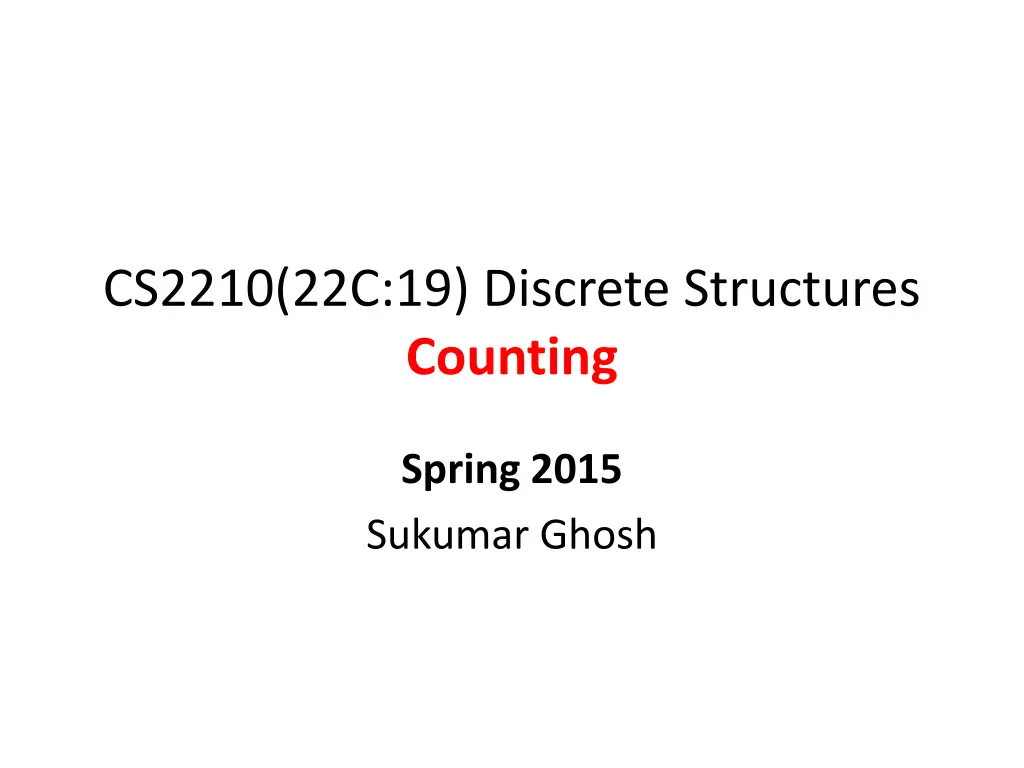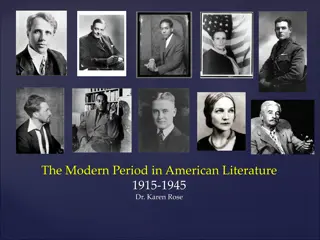
Discrete Structures and Counting Examples for Learning
Explore examples in Discrete Structures and Counting including the Product Rule, Sum Rule, Inclusion-Exclusion Principle, Tree Diagrams, and the Pigeonhole Principle. Understand concepts such as counting subsets, loops, and more with visual aids and explanations. Enhance your knowledge in discrete mathematics.
Download Presentation

Please find below an Image/Link to download the presentation.
The content on the website is provided AS IS for your information and personal use only. It may not be sold, licensed, or shared on other websites without obtaining consent from the author. If you encounter any issues during the download, it is possible that the publisher has removed the file from their server.
You are allowed to download the files provided on this website for personal or commercial use, subject to the condition that they are used lawfully. All files are the property of their respective owners.
The content on the website is provided AS IS for your information and personal use only. It may not be sold, licensed, or shared on other websites without obtaining consent from the author.
E N D
Presentation Transcript
CS2210(22C:19) Discrete Structures Counting Spring 2015 Sukumar Ghosh
Counting subsets of a finite set Let S be a finite set. Use product rule to show that the number of different subsets of S is 2|S|
Counting loops How many times will the following program loop iterate before the final solution is generated? What is the final value of K? K:=0 for i1: = 1 to n1 for i2 := 1 to n2 for i3:= 1 to n3 K:= K+1
Pigeonhole Principle If 20 pigeons fly into 19 pigeonholes, then at least one of the pigeonholes must have two or more pigeons in it. Such observations lead to the pigeonhole principle. THE PIGEONHOLE PRINCIPLE. Let k be a positive integer. If more than k objects are placed into k boxes, then at least one box will contain two or more objects.
Application of Pigeonhole Principle An exam is graded on a scale 0-100. How many students should be there in the class so that at least two students get the same score? (Do not consider scores with fractional points.) Answer: More than 101.
Generalized Pigeonhole Principle If N objects are placed in k boxes, then there is at least one box containing at least N/k objects. Application 1. In a class of 73 students, there are at least 73/12 =7 who are born in the same month. Application 2.
Permutation Note that P (n, n) = n!
Combination In permutation, order matters, in combination, it doesn t.
Example of combination In how many bit strings of length 10, there are exactly four 1 s?
Pascals Identity If n, k are positive integers and n k , then
Example: Approximating (1+x)n The number of terms to be included will depend on the desired accuracy.






















